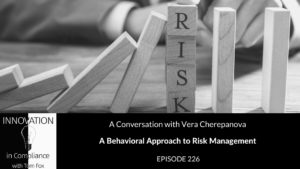The award-winning, Compliance into the Weeds is the only weekly podcast that takes a deep dive into a compliance-related topic, literally going into the weeds to explore a subject. In this episode, Matt and I explore the collapse of Silicon Valley Bank (SBV) and its outcomes. We discuss the consequences if the Federal government fails to bail out Signature Bank in New York and Silicon Valley Bank. The Dodd-Frank Act is examined, and noting that the SBV Chief Risk Officer left 8 months ago and was never replaced is a huge red flag. Will this event cause the Federal Reserve will pause interest rate hikes? Why did Libertarians from the tech industry scream for bailouts? Tom and Matt expertly unpack the complex details within the industry and provide insight and analysis into this relevant and timely industry topic.
Key Highlights
The Impact of Silicon Bank and SBV’s Failures on the Banking Industry [02:01]
Implications of Unsold Silicon Valley Bank Assets on Taxpayers [05:04]
Challenge of Businesses Dealing with Employee Benefits under Federal Government Regulations [09:04]
Effects of Changes to the Dodd-Frank Act on Midsized Banks [12:54]
The Impact of Regulatory Ease on Business Failures [16:47]
The Reasons Behind Silicon Valley Bank’s Chief Risk Officer Quitting [20:53]
The Impact of Social Media on Interest Rate Decisions by the Federal Reserve [24:52]
Notable Quotes:
1. “So those loans brought in maybe 2 or 3 percent interest, but SVP had to pay out interest rates that might be more at 4 percent. That difference undermined the capital structure and the balance sheet of SVB until people started getting skittish, and then they said, Maybe I should pull my money out, which made the bank even more weak, so people got even more skittish.”
2. “The big issue, which is why the business customer angle is important, is that under FDIC rules, a bank’s deposits are insured up to 250,000 dollars per account.”
3. “Is it a business if you can never fail? This was not too big to fail. This was we are not going to let anybody fail.”
4. ” You may not know where your key suppliers, customers, or key third parties are banking. Maybe you have that information. But does that mean you’re going to have to assess the financial health of those financial institutions of your customers? And know if they can pay you for your vendors or third-party suppliers. They can meet their payroll to deliver their services.”
Resources
Matt on LinkedIn
Tom on LinkedIn



